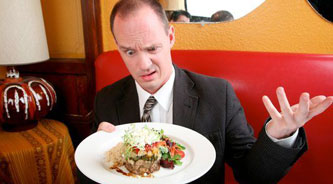When it comes to hair loss treatments, all of those that are currently available usually fall into one of two main categories, the treatments that work as stated and those that don’t work at all. It can be a minefield and though most of the time there are no real side effects to the treatment, ultimately it could be your body that suffers.
 For many years it was believed that hair loss could be treated with a range of ‘out there’ solutions and some people even went as far as having electro-therapy, subjecting themselves to electric shocks in order to reinvigorate the hair follicles in order to try and promote hair growth. Some of the hair loss treatments that are available today are almost just as farfetched.
For many years it was believed that hair loss could be treated with a range of ‘out there’ solutions and some people even went as far as having electro-therapy, subjecting themselves to electric shocks in order to reinvigorate the hair follicles in order to try and promote hair growth. Some of the hair loss treatments that are available today are almost just as farfetched.
The fact is that some treatments really do work as they state, but if you are losing your hair, the chances are you’ve already tried some of the ‘solutions’ that are available. Before you go any further, here are four hair loss treatments that may not work quite as you expected.
Hair transplants
As more celebrities are looking to find the ultimate solution to their hair loss, more and more are turning to surgery as a cure.
A prime example of this is British soccer player Wayne Rooney, who recently underwent a hair transplant himself. Rooney was criticized by many for going through with the process but was not afraid to take the extreme measure after realizing he was slowly going bald. The star even posted pictures during and after surgery.
Though things may have turned out just fine for Rooney, it is important to remember that despite advances in the field of hair transplants, they are still not always guaranteed to give you the results you are looking for.
There are many doctors that are not necessarily professionally accredited offering the procedure and the risks associated with hair transplant are still there. Some of the potential pit falls of hair transplantation include infections, unnatural looking hair, poor thickness or density and last but most definitely not least, scarring.
Another common problem and again this will tie hand in hand with unqualified doctors; is the type of transplant that is carried out. Most surgeries offering hair transplantation are carrying out a procedure known as the linear or strip transplant. This procedure involves removing a portion of the scalp and replacing it with a long strip taken from the back of the head in order to move the distribution of permanent hair follicles. Patients can be left with painful scarring and this was widely published when it happened to actor Jeremy Piven, following a bungled procedure.
A much less invasive method of hair transplantation is known as follicular-unit extraction also known as FUE harvesting. In FUE harvesting, individual follicular units are extracted directly from the hair restoration patient’s donor area, ideally one at a time.
Hair loss brushes
Another treatment for hair loss that has very little if any medical grounding is hair loss brushes.
There are a number of far out different brushes that claim to assist in slowing down or stopping hair loss. They are based on the theory that by stimulating the scalp through the use of massage, magnets and brushed, the circulation of blood through the scalp and to the hair follicles increases and there for improve and promote the growth of new hair.
Unfortunately there is very little medical evidence available to give credit to this theory. Though it has been proven that improving circulation in the scalp using drugs, laser therapy and other methods, can actually stimulate the follicles back to life, these brushes and head massagers really don’t work.
Minoxidil
This is probably the most widely used method of hair loss treatment available on the market today. The drug which although has been proven to work for the treatment of hair loss, was in fact initially developed for the treatment of high blood pressure. The drug is actually approved by the FDA and has proven medical science to back up its claims as a hair loss treatment. So what is the problem?
Well unfortunately although the drug does work for many people, the fact is that the drug does not work for everyone. According to medical studies, the over the counter variant of Minoxidil may actually only work as anticipated in around 38% of all hair loss treatment patients.
It has been proven that in order for the drug to function as intended, the patient must have a specific enzyme in order for the follicles of the hair to respond correctly to the treatment. The enzyme “sulfotransferase” is not always produced in sufficient quantities by some patients, and there is a 65% chance that you could be one of those people. So be warned there is no guarantee that Minoxidil will work for you!
Herbal supplementation
Ok this may seem pretty obvious but by maintaining good nutrition the hair follicles stand the best chance of continuing to function correctly over the long term and some supplementation such as biotin have been proven to support t good hair quality. However, please keep in mind that a vitamin or supplement is very unlikely to prevent the loss of hair, especially if it is hereditary hair loss. There are many claims made by a lot of hair loss supplement suppliers, however, many will just serve to keep your hair in good condition, only FDA approved treatments such as Minoxidil have a reasonable chance of slowing, stopping and possibly reversing the onset of hereditary hair loss.
So that is the bad news over with, the good news is that there are a great number of hair loss treatments out there that can indeed work providing that they are used correctly and in the correct circumstances. As long as you do some research into the treatment you are trying and apply a little bit of common sense then the chances are you may be successful in your treatment.

